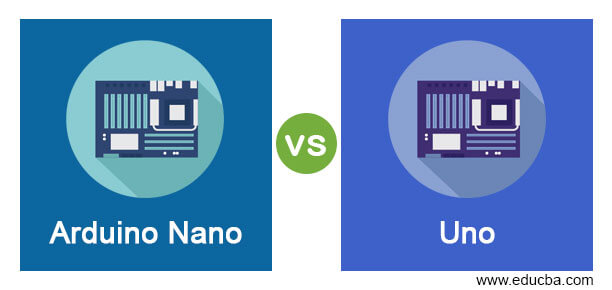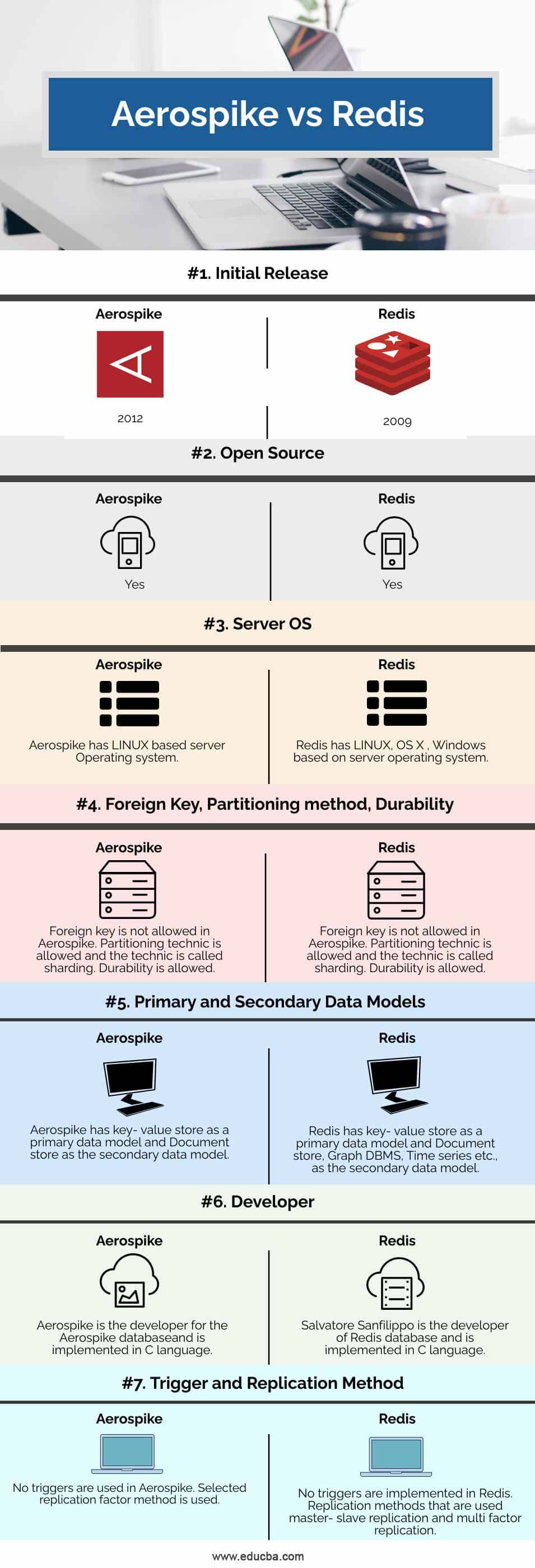Updated April 7, 2023

Difference Between Arduino Nano vs Uno
The small breadboard which is based on AT Mega is called Arduino Nano. It has 14 digital input-output pins and 8 analog pins. It is the smallest breadboard in Arduino. The weight is just 7g and power consumption is 19 mA. Uno is an open-source microcontroller board of Arduino with ATMega328P. There are digital and analog input/output pins that can be connected with different expansion boards or circuits in the system. There is an in-circuit system programming header and a 16MHz ceramic resonator in the microcontroller Uno.
Head to Head Comparison between Arduino Nano vs Uno (Infographics)
Below is the top 9 Comparison between Arduino Nano vs Uno:
Key Differences between Arduino Nano vs Uno
Let’s discuss the top comparison between Arduino Nano vs Uno:
- The size of Nano is 1.7” x 0.73” and Uno is 2.7” x 2.1” that shows Nano is much smaller than Uno. The price of Uno comes from $20-$23 while Nano is much less and close to 7$. Both can be connected to the computer using a Standard A/B USB cable that is a part of the microcontroller system. If the working space is smaller, it is better to go with Nano.
- Nano has a large number of pins among both. There are 14 digital pins used and 8 analog pins used in the system. Uno has the same 14 digital pins and only 6 analog pins. Among the digital pins, 6 have PWM in Nano and Uno. Uno uses a regular USB port while Nano uses a Mini USB port.
- Both Nano and Uno have a clock speed of 16MHz and the memory also remains the same.Nano has a flash memory of 32kB with a preinstalled bootloader while Uno is 32kB without a bootloader.
- Static Random Access Memory is used in Arduino systems. Uno has 2kB SRAM space while Nano has 8kB SRAM space in the system and hence it can store more data than Uno. When the program is up and running, the variables can be created and manipulated in Nano due to its SRAM space and Mega systems while it does not happen in Uno.
- The programs can be written in Uno by connecting it to the PC directly and making it work. But this cannot be done in Nano system. A serial to TTL converter is needed to write programs in the Nano breadboard.
- If the project requires less storage and the space given is small, then it is better to go with Nano as the size of Nano is small and the specifications are more or less similar to Uno. Thus, it does all the work done by Uno with the storage and memory capacity but looks to adjust with less space in the system. If the need is a fabrication, it is better to go with Nano and if it is needed for developing projects and codes, Uno works better with the capability.
- All the codes written for Uno will work with Nano due to the less number of analog pins in Uno. But the code written for Nano will not work in Uno because there are 8 analog pins in Nano but there are only 6 analog pins in Uno.
Comparison Table of Arduino Arduino Nano vs Uno
The table below summarizes the comparisons between Arduino Nano vs Uno:
| Arduino Nano | Uno |
| Nano is used by fabricators who start fabrication of the system with a smaller size of the breadboard to learn and analyze the working of Arduino. | Uno is the popular Arduino due to its smaller size and compatibility with software and hardware in the system. |
| The size is small and smaller than all other Arduino breadboards that helps it to restrict itself to any space centered applications or projects in the system. | The size is quite big when compared with Nano but preferred mostly due to its working in the system and the features used. If the application is not space centered, it is better to go with Uno. |
| An integrated development environment is used in the microcontroller to make it work with the users. | There is no user interface and hence fewer interfaces are used. The architecture is light. |
| There is no power regulator in the controller and if external power is needed, 5V regulated power source has to be used in the system while using Nano. | Uno has a power regulator on the board to control the power coming to the controller. This helps to maintain constant power in the board. Also, it protects the board from short circuits. |
| The microcontroller used is AT Mega 328 and AT Mega 168 and it depends on the usage of the project and the programmer using it. | The microcontroller is always AT Mega 328 in Uno. |
| The programmable microcontroller is not available but a USB UART interface is available in Nano to manage the tasks. The UART interface is FT232RL. | A programmable microcontroller is used so that the tasks could be modified easily in the system with ATMega 16U2. |
| Ethernet shields are not used here and this is better for small programs with automation that can be done easily. | If the applications are simple with sensors, GPS, motor controls, or alarms, it is better to go with an Uno microcontroller. |
| 40 micro Ampere power is given per I/O in Nano and the power is not great to deliver big projects. | 20 micro Ampere power is given per I/O in Uno and hence the power delivery is less. |
| Permanent storage memory is 0.51kB EEPROM with working storage and memory storage being added to the system. | Permanent storage memory is 1kB EEPROM and there is other working storage and flash memory storage. |
| Nano does not have Arduino shields but a pin header is set up in the breadboard so that prototypes can be made easier with the help of sockets available. | Uno can connect to Arduino shields and has a pin header arrangement to make it compatible with any other breadboards in the system. |
Conclusion
If the project is simple with low cost and a small profile it is better to go with Nano and it can be used in portable electronics and sensor gathering. If desktop prototyping is needed with ethernet shields, then Uno is the best choice and they can be used in IOT sensors as well.
Recommended Articles
This is a guide to Arduino Nano vs Uno. Here we also discuss the Arduino Nano vs Uno key differences with infographics and comparison table. You may also have a look at the following articles to learn more –


